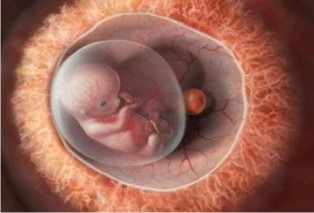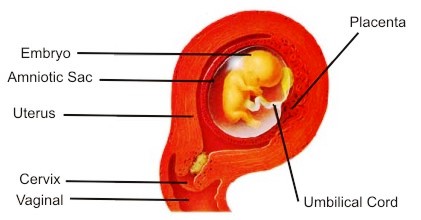Purposeful Care - Mother's e-Guide
Main menu:
Antenatal
Purposeful Antenatal Care
The objective of antenatal care is to ascertain that every expectant and potential mother maintain good health. The mother is exposed to the art of normal delivery and child care. Quality antenatal care is a preventive therapy that warrants the co-operation of the expectant mother and medical expert. At antenatal period, the fetus relies upon its mother for all activities hence the healthier the mother, the stronger and healthier the fetus too. This will even have considerable influence on the baby after birth. Consequentially, a purposeful antenatal care bears healthy children. Antenatal entails the pregnant woman visiting the doctor without hesitation (after discovering changes in her system). Subsequent visits must be at spaced regular intervals as scheduled by the Medic. In established standard, to provide the attention needed, after the doctor has confirmed the pregnancy via a medical test, three to four midwives are assigned to the pregnant woman. They assist to provide all her antenatal care in which one of them will be among those to attend to her during the child delivery in the labour room.

This is a method that helps create confidence in the potential mother during the pregnancy and at childbirth, because she would have developed intimacy with the medical expert who will even be with her throughout the labour period. Additionally, this social and psychological support nullifies in the woman negative feelings about pregnancy while a worry-free childbirth is confidently triggered. The first visit to the doctor should be made at about the time of the second missed period. It is not the time for fidgeting as some women do because of the enquiry into their personal health life rather it should be seen as an opportunity to respond to questions about their health status, well-being and needs. Most importantly, it is an avenue to check the prospect of the foetus-baby so as to create enabling means for its survival cum development.
Baby Formation
At inception, the baby is a cluster of cells (floating to the uterus) with no human-like resemblance yet there is life in the growing identical cells called Zygote. On attaching to the uterine lining, it becomes an embryo, so the baby-to-be is called. By three months, the embryo would have developed to what is known as Fetus. In a simple definition, Bravolol explained a fetus (or foetus) is the young of a human or animal while in the womb: an egg. It can also be described as an unborn or unhatched vertebrate in the later stages of development showing the main recognizable features of a mature being. As a result, until the eight week of pregnancy, as stated before, the foetus is also known as 'Embryo'.

Visuals: Zygote - Embryo - Fetus
The cells in groups assume different roles like: forming the baby's skin, bone structures, brain etc. Some of the cells are not part of the formation rather they help in the creation of special features such as the placenta and a fluid-filled space that develops around the embryo. This space is lined with a thin, glistering membrane, in turn, this is surrounded by a thicker membrane. The membranes with the contained water form a unique bag of water called Amniotic sac - 'the baby's home'. Within 36 weeks of pregnancy, 1000ml i.e. 1 pint of water would have surrounded the foetus. The foetus is able to move freely within the Amniotic sac and spared from any form of accident encounted by the pregnant mother as the water absorbs all shocks. The fluid also enables the baby to be safe, preventing it from being tossed or jolted around by the mother's movements.


Image of foetus enclosed in the Amniotic sac
The complete need of the foetus, part which includes nourishment is catered for by the placenta and the umbilical cord. The placenta acts as the lung, liver and the kidney of the foetus for its energy supply. The foetus also gets oxygen and food which are transferred from the mother's bloodstream to its own blood. Interestingly, the blood of the fetus and mother never mixes. The baby makes use of the oxygen and the food for growth and releases waste product. The wastes equally pass through the umbilical cord and the placenta.


Visual: The foetus bonded via the Cord and placenta
They are then sucked up, channelled out by the mother's body. The umbilical cord grows out from the placenta while the baby grows in the mother's uterus. The fetus-baby and the placenta are duly linked together through the cord. The umbilical cord which initially is a fraction of an inch also grows as the baby develops. By the ninth month, the cord is about twenty (20) inches which is long enough for free movement of the foetus in the womb; thereby the foetus is not rooted to a spot.
Home Page | Antenatal | Postnatal | Neonatal | Healthy Tips | FAQ | Trainers Pack | Extras | General Site Map
